Are you looking for the best washes for painting miniatures? How do you know what wash to use for your models? Acrylic washes are a thinned version of paint. Washes provide a way for you to darken, shift-color, or even highlight parts of your model. If you use washes a certain way, the techniques also provides a water-color effect to your model. For most miniature painters, the best washes are created specifically for small models. This means a wash with high-density pigment in a high-quality binding medium with low viscosity (thinned, high flow).
In this article, I present you with my top 7 washes that I recommend for painting miniatures. My favorite wash brands include those by Games Workshop and Vallejo. Army Painter makes a great set of washes, too.
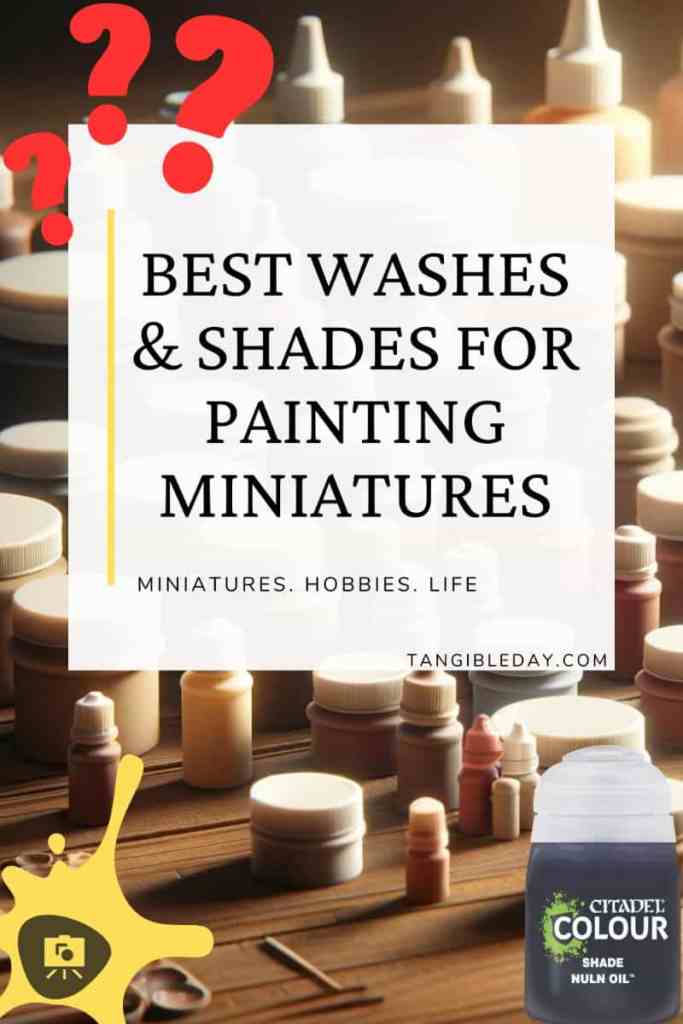
Here are the 7 best washes for painting miniatures and models:
- Agrax Earthshade (Citadel) – Rich, earthy brown
- Nuln Oil (Citadel) – Deep, black ink
- Reikland Fleshshade (Citadel) – Warm, flesh tint
- Seraphim Sepia (Citadel) – Yellowish, antique brown
- Dark Brown Wash (Vallejo) – Dark, chocolate brown
- Black Wash (Vallejo) – Intense, jet black
- Rust Wash (Vallejo) – Orange-brown, rusty
Of course, I use many washes, but the washes on this list are the most frequently used as you will see why below.
You can check out my gallery for some examples of how I’ve used these washes to paint miniatures.
Read on for more details about washes, and the review of the top 7 washes for painting miniatures and models.
What is a “wash”?
In the world of miniature painting, a wash is an artistic medium that you use to move pigment into recessed areas of a model.
Washing miniatures is a technique that uses a thin, low viscosity pigmented color that flows into deeper crevices, troughs, and cracks of a figure. When applied liberally over an entire model, a wash will flow off the high points and concentrate in the recesses.
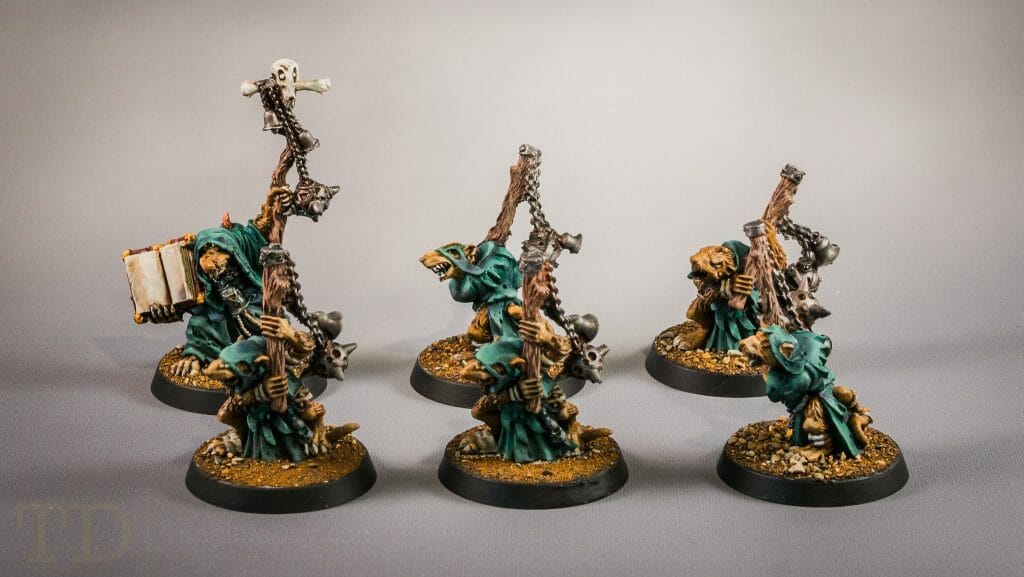
In other words, after you apply a wash over a surface, the color should flow easily off raised areas into deeper areas, e.g., cracks or concave corners.
A “wash” may also be termed as a “shade”. A shade is a paint medium that darkens. Washes essentially darken a model, but do so where it gathers most, in recesses.
I almost always use a wash in my miniature painting. Washes are especially useful in speed painting. The best kind of washes help you maintain high-contrast on a model.
When it comes to painting miniatures, contrast is king.
RELATED: USE WASHES TO GLAZE METALLIC PAINTS
You can use different mediums to make a wash (see example acrylic ink washes here or oil washes here). Or, you can buy ready-to-use washes for painting miniatures.
You can make washes with thinned acrylic paint. The same colors you use to paint miniatures make great washes if you know how to thin them down properly.

Can you make your own washes?
Most of the time, it only takes three ingredients to make a wash:
- Thinner – The best thinner for water-based acrylic paint or ink is water (almost all well-established model paints or inks use water-based acrylic mediums, e.g., Games Workshop, Vallejo, Army Painter, P3, Scale 75, Reaper Paints). If you’re making oil washes (see here for example), then you’ll need a different solvent such as mineral spirits.
- Color pigment – This can be anything you want. You can use acrylic paints or inks (which have a higher pigment density and lower viscosity, e.g., “watery”). Or, you can use other fancy things, like dry pigments that you dissolve in your thinner. Essentially, making your own paint from scratch.
- Flow-improver – In general, I find this component optional. But, a flow-improver, also known as a “surfactant” breaks the surface tension of water. This makes your wash flow better. The wash will slide across raised surfaces into recesses more easily. A flow-improver might be simple dish detergent, or other soapy household product. Or you can buy dedicated flow-improvers. I love Liquitex Airbrush Medium for this purpose because it is easy to use and inexpensive. The reason I don’t use flow-improver most of the time is that you actually lose control of your wash. Too much flow-improving and your washes go where you don’t want it.
| Liquitex Airbrush Medium | |
|---|---|
 |
Price on Amazon Price on Walmart Price on BLICKS Art |
How to make your own wash?
There are so many formulas on how to make your own wash. Like painting miniatures, the techniques and approaches are all different. It depends on what you want to do.
I’ve written a little on how to make washes to add contrast to your models. I’ve also used my own washes on different kinds of models.
For a starting point toward making your own washes that is nearly identical and much cheaper than Citadel’s version is to start with approximately 8 parts mixing medium (any brand, or use list below), 3-4 parts highly-pigmented ink (of any preferred color), and 2 parts flow aid/improver.
- Acrylic medium (8 parts) – This helps maintain the “binding” ability of your wash if you add too much water. You could get away without this if you thin with only a little water in your preferred wash mix.
- Scale 75 inktensity (3-4 parts) – you can use any regular paint or ink. If you use regular paint, you might want to add more because to your mix. On a per volume basis, inks have more color saturation than regular paints.
- Winsor Newton flow improver (2 parts) – Of course you can use my favored Liquitex Airbrush Medium as a flow improver. As mentioned, the flow-improver might not be needed. It depends your needs.
Mix these colors in a glazed ceramic palette. Thin with water to a preferred viscosity and apply to a model.
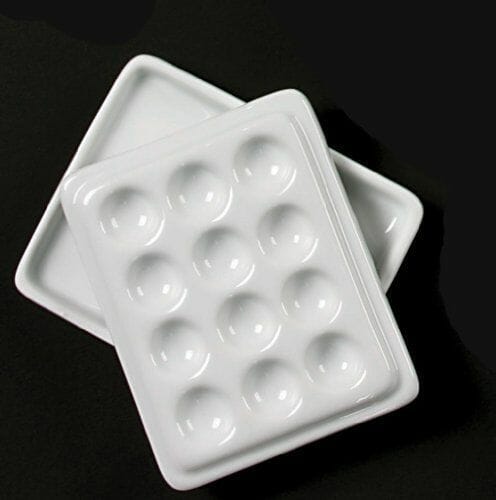
Let your mixture pool in the recesses and keep it from dripping into unwanted areas. Hopefully, with some extra playtime, you’ll have created your desired “wash formula”. Experiment!
Here are some other cool sites that show you how to make your own washes.

Fun fact: Many of the techniques that miniature painters use came first from fine scale modelers and model train hobbyists. These hobby spaces are much older, with storied histories. For those previous generations, painting techniques and reagents had to be developed from scratch.
The modern miniature hobbyist and modeler has it easy! We can just buy what we need instead of using homemade cocktails.
RELATED: USING OIL PAINTS AS A WASH FOR MORE REALISTIC MINIATURES AND MODELS
Can you airbrush washes?
Yes!
But, an airbrushed wash won’t behave the same way. For the most part, if you airbrush a wash, it will sit on the raised surface of the model without flowing into the recesses.
This means that if you airbrush a wash, you’ll end up glazing.

Glazing is the process of applying a transparent color over another painted surface. The purpose of a glaze is to change the underlying color with another transparent paint on top.


Another miniature artist who uses an airbrush to apply glazes is Sergio Calvo. Glazing is a powerful technique. And, you can airbrush washes as a fast and easy way to apply glazes to subtly change the underlying color on your models!
What is the best brand of washes?
Of all the companies that make paints and washes specifically for miniatures and models, there are three major players.
- Games Workshop
- Army Painter
- Vallejo
There are many other companies, of course, e.g., Privateer Press, Reaper, but Games Workshop, Army Painter, and Vallejo make some of the most well-respected pigmented washes in the industry.
The best washes are easy-to-use, versatile, and easily purchased online or at local hobby stores.
What are the best wash paint sets?
Vallejo has an awesome 8-colored wash paint set.

If I had to start all over again, I’d buy this first.
Why?
This is the most cost-effective wash set out of the three I mention. 17 ml is more than Games Workshop’s offering, and the dropper bottles make this easy to use with a palette.
Better yet, because of the dropper bottles, you can apply these directly into your airbrush cup.
| Vallejo Wash Set |
|---|
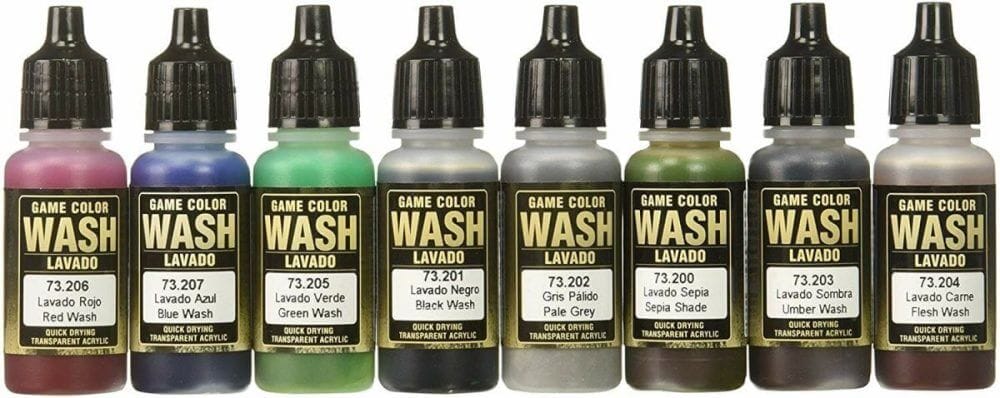 |
| Check Price on Amazon |
| Check Price on Noble Knights Games |
My only hiccup with this set is that you’ll probably end up using up the black wash first, followed closely by the Umber wash. Both of these washes are useful for most miniatures (and bases/terrain pieces), that you’ll go through them quickly.
On the other hand, having the other colors to play with glazing or simply washing models to a darker tone is a nice option.
Games Workshop has a shade (wash) paint set that is great painting the Citadel model line.
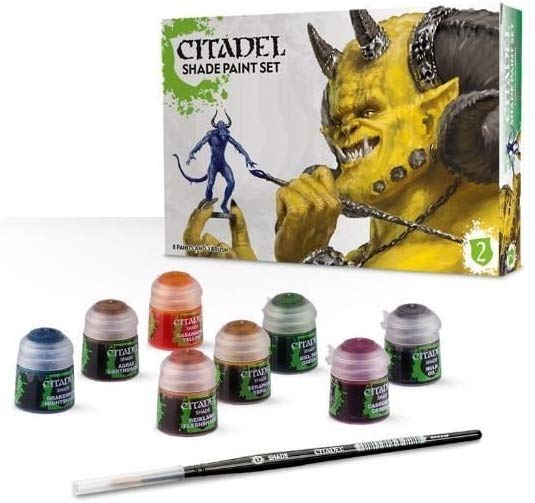
If you’re collecting Warhammer 40k or Age of Sigmar fantasy models from Games Workshop, you’ll end up using all of these washes (or “shades” in GW terms).
Games Workshop has a “painting system” that makes it simple for beginner painters to get started in the hobby.
The shade paints are a key part of that GW Painting System.
To apply Citadel washes, merely dip your brush in the pot, then apply liberally over your model. Make sure the wash doesn’t pool too much on the surface of your model.
For best results, don’t mix Citadel Washes with water.
You can airbrush Citadel washes to use as a glaze. They are great for this purpose. The easiest way to transfer wash from Citadel Pots to your airbrush is with a brush. Just be careful you don’t spill the top-heavy pots. Spilling Citadel pots is a very common issue.
Army Painter Quickshade and Washes Set is perfect for the painter looking for creating high-contrast effects quickly.

This is the least expensive wash set you can buy for what you get in the box. There are 11 wash colors in the set. These colors shade (or darken) your models with various color tones.
Also included in the set are the Quickshade solutions, which quickly help you add contrast to your models.
I write a little about using Quickshade for speed painting here. They are perfect if you’re looking to paint a lot of models of the same type, and want to do it quickly.
As with the other wash or shade sets, you can airbrush the washes as a glaze. Because of the dropper bottles, transfer of wash to airbrush is easy.
Don’t airbrush the Quickshade solutions in this set. They are much more viscous, not water-based, and very sticky. Quickshade will likely clog your airbrush.
| Vallejo Wash Set |
|---|
 |
| Check Price on Amazon |
| Check Price on Noble Knights Games |
How to use a wash?
Here’s what I do to apply a wash.
I load a brush with a lot of wash. Not so much that the wash drips everywhere, but enough that I know I can cover a large area with it.
Then I drag the brush “across the grain” of the miniature surface I’m washing. This motion allows the brush to deposit most of the wash into the recesses of the model, such as between clothing folds.
If you pull your brush along with the grain of a model, you’ll “clean” the wash out of the recesses. Not a good practice.
Note: Make sure the wash doesn’t pool too much. As a wash dries it shrinks a little. Too much wash in a small area could lead to unsightly stain-like dark edges.
As with painting, apply washes in layers if you want more pigment applied to your model. Ultimately, liberally apply wash, but maintain control.
Agrax Earthshade (Citadel) is the descendent (version 2.0) of the legendary Games Workshop “Devlan Mud wash”, or also known as “liquid talent”. If you’re a new miniature painter and had to choose only one wash, this would be it. I’ve found this useful in almost every miniature painting situation.
Outside of more advanced shading techniques, e.g., oil washes, wet blending, loaded brush, or two-brush “spit” blending, Citadel washes are a great tool for adding contrast.
Agrax Earthshade is easy to apply. All Citadel shades and washes are acrylic water-based medium. But, you don’t need to thin it with water. Simply load a brush and apply it across the surface of your miniature. The wash dries to an even matte brown tone.
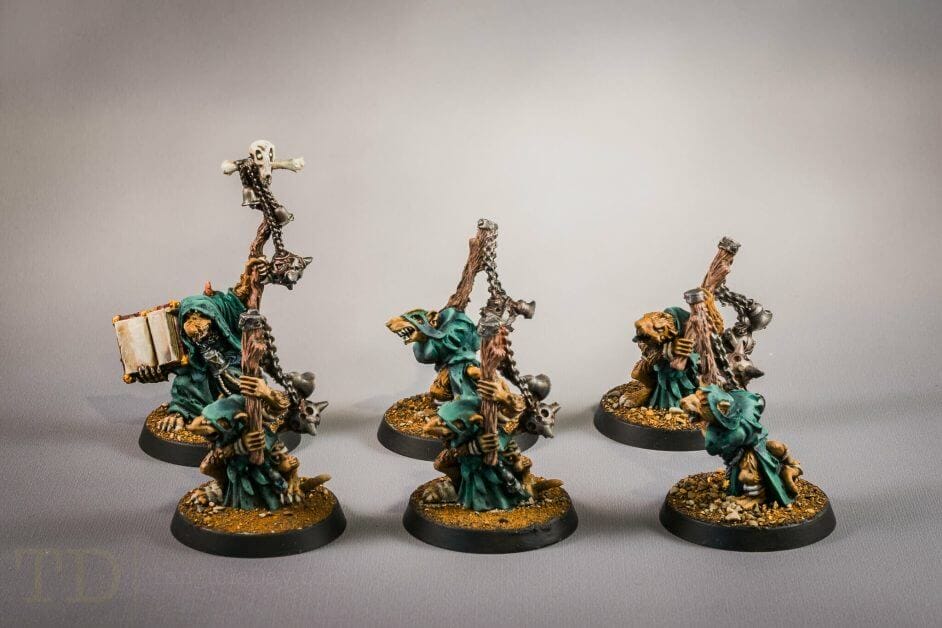
Pros
- Easy to apply with predictable results
- Versatile and looks great
- Dries evenly and had a predictable effect on models with an even base coat
- Great for shading cloth, paper, flesh, and other organic-type materials on miniatures
Cons
- Could be expensive if you use this a lot, e.g., terrain painting for example
- If over-used across an army without adding other layers of paint, this wash could overwhelm your color scheme, making everything look “same-y” and “flat”
- Top-heavy pot is cumbersome and prone to spilling
Nuln Oil (Citadel) is a black-colored wash. It provides an easy way to quickly darken recesses on a model. When used well, it can be great substitute to “black-lining” certain models that have sharply sculpted recesses.
In many respects, Nuln Oil is similar to Agrax Earthshade in that it has versatility and produces predictable results after drying.

On the other hand, Nuln Oil leaves a “cooler” tone to surfaces than Agrax Earthshade, which produces a warmer tone over a model.

As a result, I prefer and recommend Nuln Oil for inorganic “cold-feeling” surfaces, such as metallic steel swords or guns/barrels, and armor plates. Because of the black hue, you’ll often want to layer up from this wash to re-introduce color saturation and highlights.
There are many other tricks and fun things you can do with Citadel Shades. At the end of the day, Citadel shades (aka washes) have an ease-of-use and predictability that make them perfect for experimentation.
Pros
- Similar pros as Agrax Earthshade
- Versatile and works great on inorganic-looking surfaces
- Produces a cooler tone than Agrax Earthshade
Cons
- Requires overlying paint layers to bring back colors and highlights
- Top-heavy bottle
- May be prone to poor results from too much liquid pooling; Nuln Oil wash has a more opaque result than other washes
This is my favorite wash for flesh-tones or other skin-like material. Reikland Fleshshade (Citadel) has a very warm, even red-toned color. Because of this warmth, this wash may also be useful for adding warmth to gold metallic paint.
For example, apply this over a layer of my favorite gold metallic paint, and you’ll get an attractive, majestic metal look. Paint more gold metallic over the raised edges and you’ll have a shiny, but very deep regal gold colored model (see image below).


On flesh colors, this wash will bring out all the fine details without making the model cartoony. As Reikland Fleshshade dries, it does so evenly with nice grades into recesses.
Feather up your highlights on washed flesh base coat, and you can achieve a fairly realistic skin paint job without a lot of extra work.

Pros
- Great for many types of surfaces; my preferred use is on flesh/skin and gold metallic surfaces
- As with other Citadel shades/washes, this dries an even matte color
- The reddish warmth in this shade is useful across many color schemes to balance cooler colors, such as dark clothing, hair and fur (see my examples above)
Cons
- In my opinion, Reikland Fleshshade has narrower use than Nuln Oil or Agrax Earthshade
- Some people may not like the deeper red undertones in this shade – Seraphim Sepia (below) is a good alternative in these cases
- The pigments tend to settle more in this pot, so try to shake before use (check out these paint shakers)
This is the classic sepia tone. Seraphim Sepia (Citadel) carries a vintage-feel, old timey nostalgia. Sepia is that darkish orange-yellow you see on old photographs and historical documents that have sit out in the sun too long.
This is a very useful wash for gold metallics. If you’re not a fan of the reddish hues in Reikland Fleshshade, then Seraphim Sepia might be what you’re looking for.

I’ve used this liberally on many models in my collection. Most of the time, I use Seraphim Sepia on warm metallics, like golds, as well as on paper-materials to give them an older, vintage look.
In the latter, more often I’m looking for variety that is different from Agrax Earthshade, which can get boring if used over too many parts of a model.

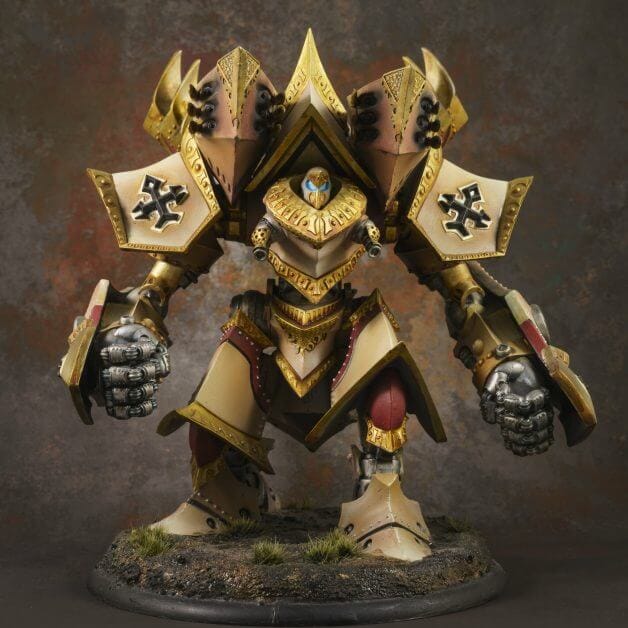
Pros
- Produces a lovely, vintage look on metallics and other surfaces
- Glazing with an airbrush is very effective for changing the overall “feel” of a model toward something “inviting”, “nostalgic”, and warm
- Can be applied straight from the bottle and requires little effort to produce effective results
Cons
- Pigments tend to settle quickly in the pot; shake well before use
- As with other Citadel wash pots, this is going to be top heavy and prone to spilling
- Limited use due to its strong color hue
Dark Brown Wash (Vallejo) is a superb wash for vehicles and larger models. It also happens to be less expensive than Citadel’s version on a by-volume basis.
The dark brown wash is great for all the same reasons as Agrax Earthshade. The brown color provides a way to add darkness to recesses without going to black. It’s a subtle method, but effective for adding more contrast.
My issue with Vallejo washes, however, is that they dry a bit glossy. They are also more unpredictable when they dry.
Vallejo washes are acrylic water-based mediums. Therefore, in some cases, you may want to even dilute these washes with water and apply them in thinner layers, if you’re going to use it on smaller models.
This is because Vallejo washes dry in much deeper, darker shades than Citadel’s versions. In other words, you need to pay more attention to how you apply it. Vallejo washes are more technical to use on smaller models.

On the other hand, if you are working with medium to large models (i.e,, light tanks, terrain pieces, etc), the cost-benefit of working with Vallejo outweighs some of the additional challenges.
All Vallejo washes work well with an airbrush. You don’t even need to thin them before spraying.

Pros
- Cost-effective brown colored wash
- Useful on larger models
- Airbrush-ready without thinning
- Dropper bottles!
Cons
- Tends to dry gloss
- Might be too dark for straight-from bottle use
- Could be hard to control if too heavily applied at the same time
Black Wash (Vallejo) is the Vallejo alternative to Nuln Oil. But, it’s more than that: this black wash is darker, blacker, and more abundant (cost per volume is less) than Citadel’s version.
I love using this for terrain pieces that require airbrushed shading. You don’t need to thin this with water (although water does a great job) before airbrushing. It adds a subtle dark gray shade when sprayed at lower pressure.
On larger models, applying this black wash with the brush also leads to very dark recesses. Raised surfaces, however, will require some paint layering work to regain some of the lost saturation and brightness.

As with all the Vallejo washes (even those not in my list), they dry with a glossy sheen. This may throw some of you off, but I end up using a matte varnish spray at the end of all my projects anyway to even out the reflectiveness.

Pros
- Very dark black wash
- Great for larger models and terrain
- Airbrush-ready and works well as a glaze
- Dropper bottles
Cons
- Dries glossy (but remedied with a matte varnish sealant)
- Might be too dark for most uses on smaller models
- Could require more technical handling to get the most out of this wash
Rust Wash (Vallejo) is simply that: perfect for rust effects. I use this a lot to weather vehicles and terrain pieces. Mechanical parts with steel, iron, or other cooler metallic surfaces look worn and more realistic with a bit of rust patina.
Vallejo rust wash has the dark-iron rust look. I’ve applied this as either a glaze with an airbrush, misting this over tank treads, pistons, and other doodads. With a fine brush, I’ve added streaks from rivets and other metal work.

For the more detail inclined painters, this wash also works well as a mix into other paints to give them a warmer-orange look. I’ve seen this used in flesh tone paints, for example.
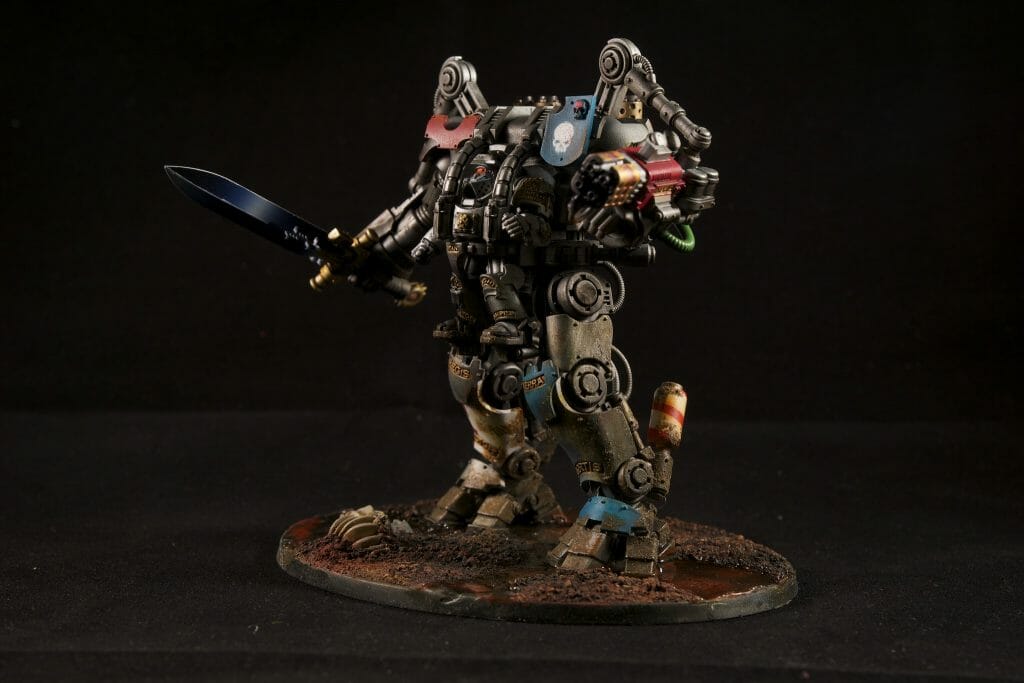

Pros
- Applying subtle rust effects is easy with this wash
- Airbrush-ready, thinned wash in a convenient dropper bottle
- Useful for mixing with other paints
Cons
- May be limited for less mechanically themed models (e.g., organic)
- Very prone to pigment settling; shake well before use
- Could be too orange for reproducing dark rust hue (in this case, mix with Vallejo Dark Brown wash, see above)
Summary
As you may have noticed, I prefer Citadel washes for smaller models and Vallejo washes for larger models. The ease-of-use and matte drying attributes of Citadel washes make them the preferred media for new painters, as well as speed painters.
For myself, I love the convenience and versatility of Citadel washes. They have predictable characteristics that make it fun to paint. I don’t need to worry about controlling the wash.
They just work. For more consistent wash application, consider a good shake.
Vallejo washes on the other hand provide a larger volume of dense pigmented media that work great in many other situations. As glazes through an airbrush, all of the Vallejo washes I listed look great on vehicles or terrain pieces.
In general, the colors I put on this list are the most useful across a range of color schemes, model types, and applications. Water soluble acrylic-based, the washes on this list are likely useful for thee majority of your modeling needs. I hope you enjoyed this article and brief review of washes.
Happy painting!




Tangible Day on YouTube (Miniatures and More!)

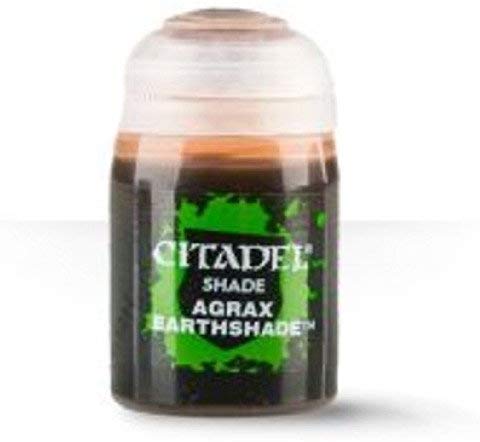

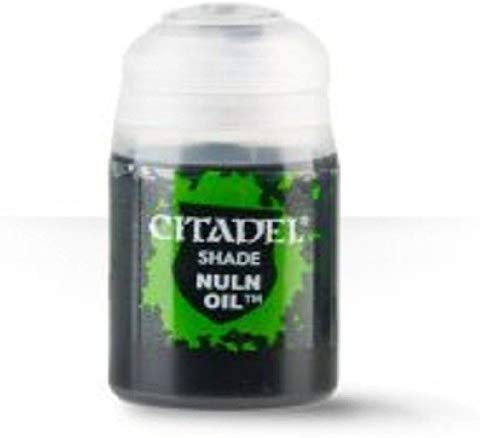

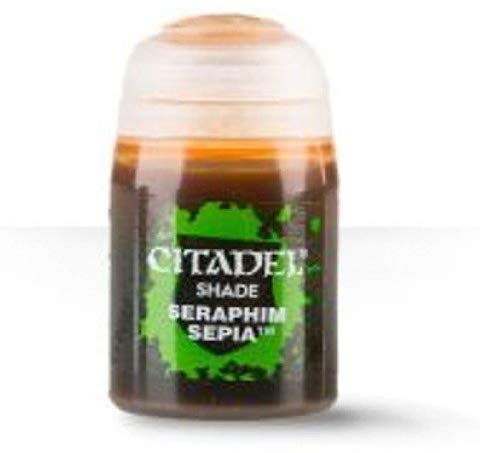
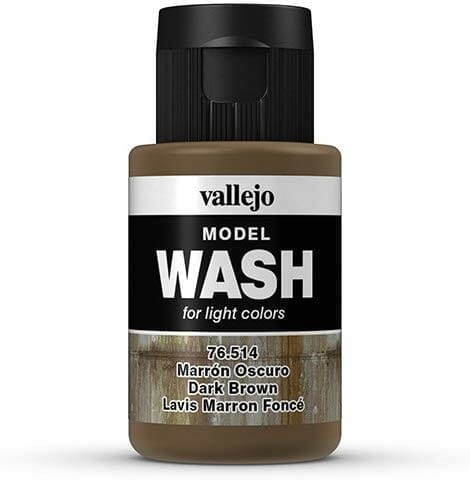


Fantastic article about washes with a comprehensive section on making your own washes.
For myself, I honestly did not know that there were pre-made washes for miniatures. I mean, it makes sense, but after so many years of making my own washes, I guess that I just never thought about it.
Thanks for the ton of info.
Thank you! It was a hard write up but I’m glad I did it ;). Yeah there are a lot of commercially available washes for hobbyists. These are just the ones I use a lot 🙂
The blade of that axe in the first photo for Reikland fleshshade looks out-of-this-world amazing! Do you know of any good resources out there for learning how to create that effect?
Oh… I painted that. I’ll write something up!
Did you ever write that up?
No yet but check this out https://www.reddit.com/r/Warhammer40k/comments/frpkod/trying_out_new_blending_techniques_on_this_power/?utm_source=share&utm_medium=ios_app&utm_name=iossmf